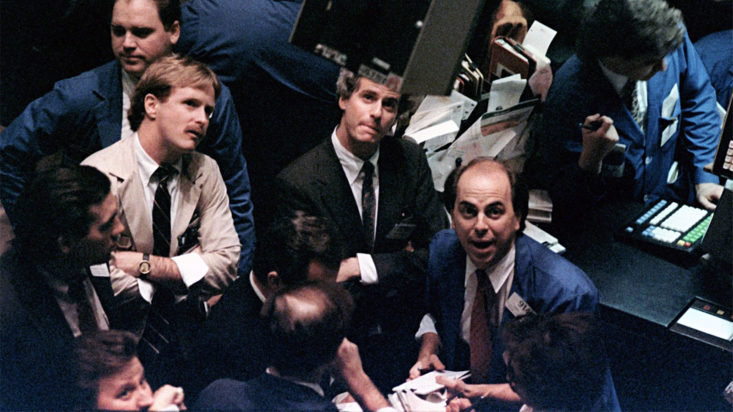September curse strikes, correction talk grows
September has historically been a bad month for markets, and it could be about to get worse. But then again, talk is cheap.
Everybody in equity markets knows that September is the cruellest month, to switch months on Eliot.
Nobody really understands why it happens (theories range from tax-related selling to seasonal behavioural biases) but it happens. The question that State Street poses is whether this is the start of a broader market correction. In any other year, that might carry the ring of hysteria – but this isn’t any other year.
The primary piece of evidence State Street offers for a potential correction is declining corporate earnings, which proved unsurprisingly resilient in a stimulus-fuelled environment, but now face harsher prospects as global governments stop underwriting consumer discretionary spending and economic growth returns to its sluggish pre-Covid rate.
“Post-reporting season we are now seeing downgrades across the S&P/ASX 300 Index as a whole and for most sectors. Telecommunications, staples and financials (mostly insurance) are the only sectors that are bucking this negative trend,” says Bruce Apted, head of portfolio management, Australia active quantitative equities.
“Adding to uncertainty are a range of delta disruptions impacting global demand and supply. We are observing supply bottlenecks and rising input costs reducing corporate profits, as well as high rates of inflation increasing the likelihood of eventual tapering and a tighter set of monetary conditions.”
Of course, State Street would hardly be the first to predict the coming correction; the last ten years has been marked by innumerable predictions that the weight of belief alone cannot take markets higher, and other commentators believe the impact of declining corporate earnings is overstated; that the delta variant will be contained, supply chain disruption will ease, and consumer confidence will grow.
The IMF expects 4.9 per cent global GDP growth for 2022, which would be consistent with decelerating EPS growth compared to 2021,” says Peter van der Welle, Robeco strategist. “But it would still leave us at the upper range of the distribution from a historical perspective, with EPS growth in the 20-30 per cent bracket.”
“This view is corroborated by our bottom-up analysis, as corporate analysts are expecting 12-month forward EPS growth in various regions to be close to but below 20% at this point in time. So, the profit party is peaking, but the aftermath looks benign.”
But there is the prevailing feeling that markets are a little too ecstatic despite the enormous obstacles arrayed against their seemingly unending ascent. While China’s regulatory crackdown has so far only touched that country’s tech and education sectors, there has been an understandable impact on investor sentiment (not to mention Evergrande, although there has been some recent good news on that front). Tack on Covid-19 and the tapering of stimulus, and a correction not only seems possible, but probable (or is already happening/has happened).
Of course, a correction isn’t the end of the world – it just means a slight adjustment in the way you see it. State Street advocates for traditionally defensive sectors like consumer staples and healthcare and notes that, for all the fuss around growth vs value, investors are failing to consider quality, which tends to generate excess returns during down markets and outperforms during rising inflation.
“Quality can be viewed from various perspectives but the one most relevant to inflation relates to the ability for a company to sustain high levels of profitability and high margins in the face of competitive and difficult trading conditions,” Apted says. “Highly ranked quality companies tend to have greater pricing power – having the ability to pass-on rising input costs to the end-customer and maintain margins.
“In recent times many companies have been tested with rising input costs. The higher quality companies have been able to pass these costs on to the end customer and have maintained profitably and held high margins. During the most recent reporting season the better-ranked quality companies have navigated this environment better and have outperformed,” Apted adds.











